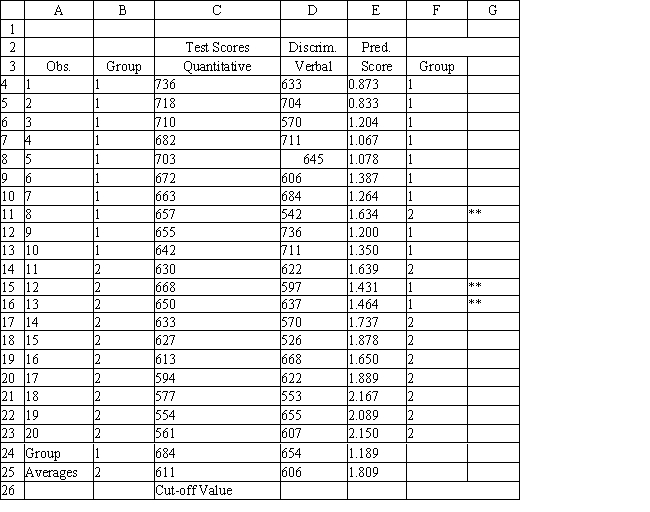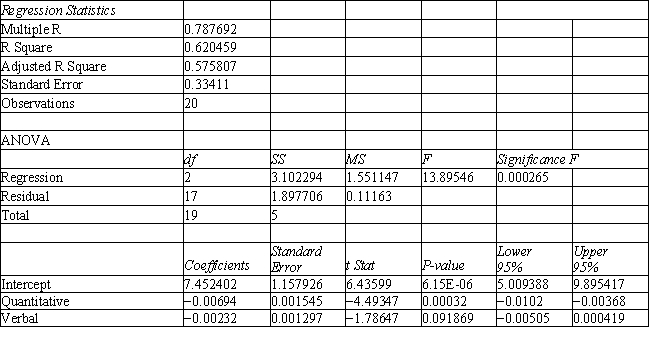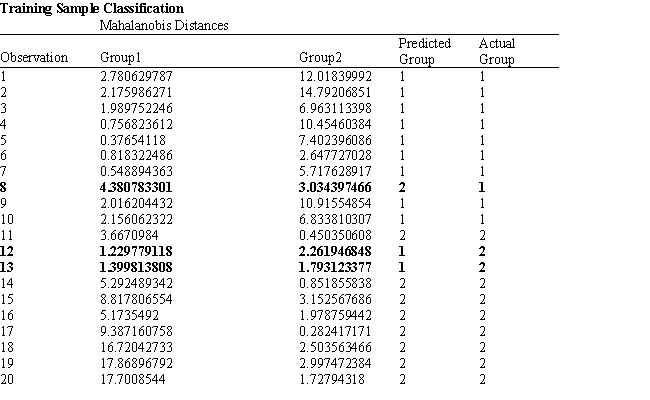Exhibit 10.1
The following questions are based on the problem description and the output below.
A college admissions officer wants to evaluate graduate school applicants based on their GMAT scores, verbal and quantitative. Students are classified as either successful or not-successful in their graduate studies. The officer has data on 20 current students, ten of whom are doing very well (Group 1) and ten who are not (Group 2) . 




-Refer to Exhibit 10.1. What percentage of the observations is classified incorrectly?
Definitions:
Standard Deviation
A measure indicating the amount of variability or dispersion in a set of related values.
Standard Sample
A representative segment of a material or component used as a reference point for quality control or calibration.
Average Time
The mean time taken to perform a task or activity, calculated by summing the individual times and dividing by the number of observations.
Standard Time
A set duration assigned for completing a given task, based on average time studies and used for planning and scheduling work.
Q12: A simulation model was replicated 100 times
Q14: A doctor's office only has 8 chairs.
Q20: Refer to Exhibit 14.1. What decision should
Q33: Every nonprobabilistic method has a weakness for
Q39: Refer to Exhibit 11.8. What formula should
Q59: A company wants to locate a new
Q66: The number of arrivals that occurs in
Q75: Clifton Distributing has three plants and four
Q77: Any integer variable in an ILP that
Q116: Refer to Exhibit 11.12. What formula should